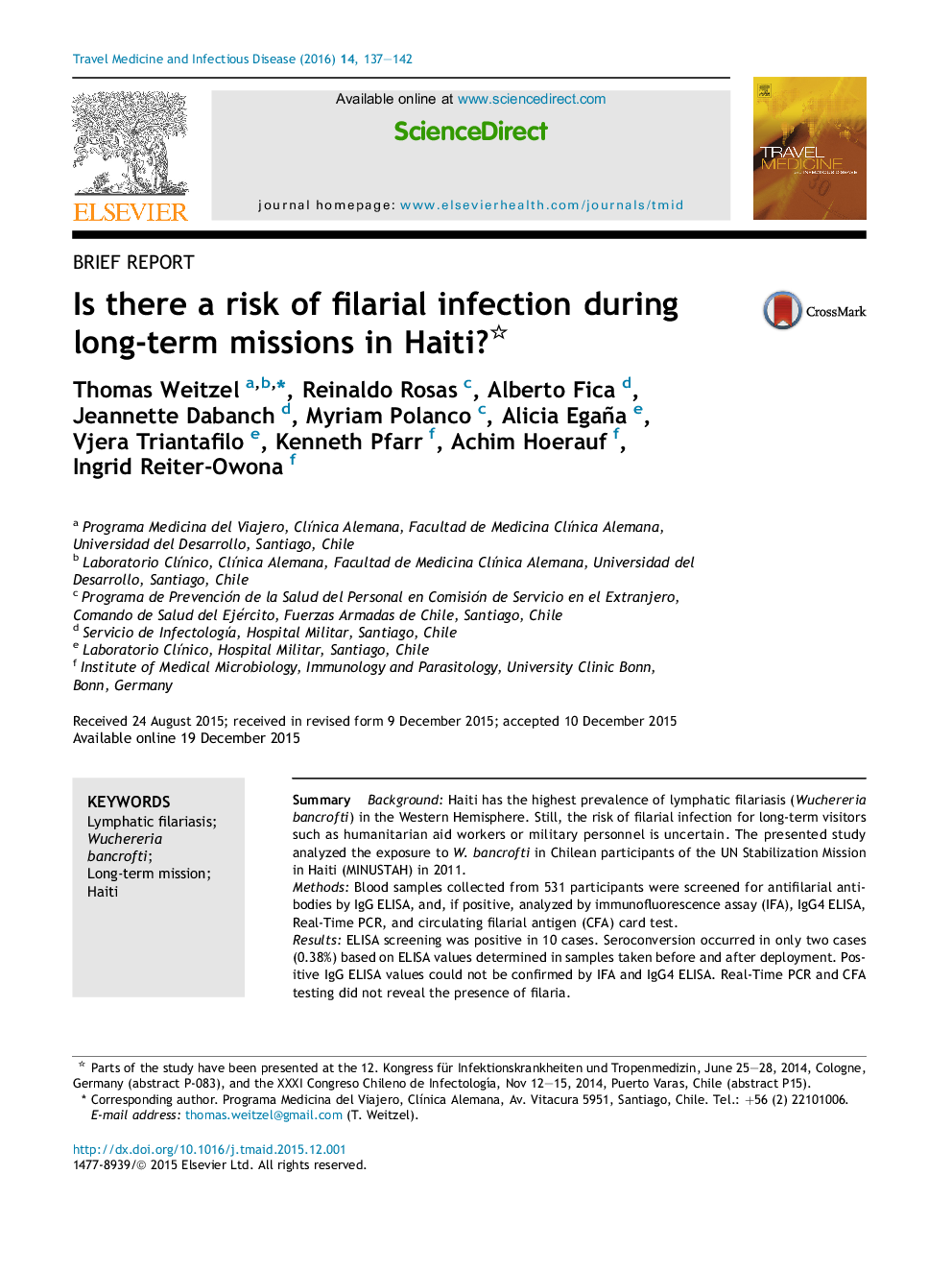| Article ID | Journal | Published Year | Pages | File Type |
|---|---|---|---|---|
| 3392738 | Travel Medicine and Infectious Disease | 2016 | 6 Pages |
SummaryBackgroundHaiti has the highest prevalence of lymphatic filariasis (Wuchereria bancrofti) in the Western Hemisphere. Still, the risk of filarial infection for long-term visitors such as humanitarian aid workers or military personnel is uncertain. The presented study analyzed the exposure to W. bancrofti in Chilean participants of the UN Stabilization Mission in Haiti (MINUSTAH) in 2011.MethodsBlood samples collected from 531 participants were screened for antifilarial antibodies by IgG ELISA, and, if positive, analyzed by immunofluorescence assay (IFA), IgG4 ELISA, Real-Time PCR, and circulating filarial antigen (CFA) card test.ResultsELISA screening was positive in 10 cases. Seroconversion occurred in only two cases (0.38%) based on ELISA values determined in samples taken before and after deployment. Positive IgG ELISA values could not be confirmed by IFA and IgG4 ELISA. Real-Time PCR and CFA testing did not reveal the presence of filaria.ConclusionsOur data indicate that in the examined cohort of MINUSTAH participants in 2011, the risk of filarial exposure or infection was low.
